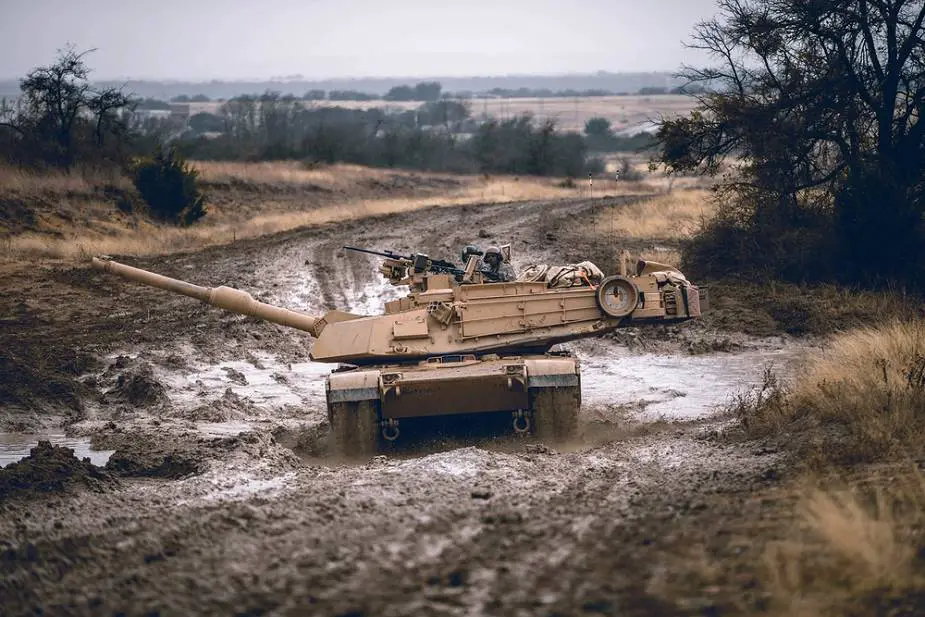Breaking news
United States plans to integrate unmanned turret on M1A2 Abrams main battle tank.
According to a press release published by U.S. Congressman Tim Ryan, $65 million has been secured to upgrade the M1A2 Abrams Main Battle Tank which is produced at the Lima Tank Plant, Lima, OH. The funding secured by Congressman Ryan will extend the service life of the main battle tank and also integrate an unmanned turret.
Follow Army Recognition on Google News at this link

A U.S. tank crew with 1st Battalion, 12th Cavalry Regiment, 3rd Armored Brigade Combat Team, 1st Cavalry Division, maneuvers through a low water crossing with their recently received M1A2 SEPV3 Abrams Main Battle Tank during gunnery live fire qualification, Fort Hood, Texas, Jan. 22, 2021. (Picture source U.S. DoD)
Tim Ryan has been a longtime defender of the Joint Systems Manufacturing Center in Lima, most recently using his position on the powerful House Appropriations Committee to help secure $65 million to upgrade the M1 Abrams main battle tank.
The plant is currently operated by General Dynamics Land Systems and employs at least 931 people in the surrounding community. General Dynamics plays an influential role in the economy across the state, spending $187.7 million with 778 different Ohio suppliers in 2020.
The M1A2 Abrams is a third-generation tank that boasts several innovative features, including a multi-fuel turbine engine, composite armor, automated fire control system, as well as enhanced protection for its crew. The tank has been in service for over forty years.
The funding secured by Congressman Ryan will extend the service life of the tank and also integrate an unmanned turret. Additionally, it will help to develop the physical architecture and mechanical requirements needed to add an Autoloader and Automated Ammunition Handling System to the Abrams, evaluate current and emerging candidates for an Integrated Active Protection System, and develop new Abrams mobility and power architecture for conversion to a Hybrid Electric Drive propulsion and power generation system.
The Defense spending bill has been passed by the House Appropriations Committee and must pass the full House of Representatives before moving to the Senate.
The M1 Abrams Main Battle Tank (MBT) has been in service with the United States armed forces since 1980. Since then, it has gone through dozens of upgrades and has been the baseline variant of several vehicles. The M1A2 SEP V3 or M1A2C is the latest variant in the family of M1A2 Abrams main battle tanks. The first M1A2C MBTs were delivered in July 20, 2020 to the U.S. Army. This version rectifies many of the space, weight, and power issues identified during Operation IRAQI FREEDOM and will be the foundational variant for all future incremental upgrades. In addition to having improved survivability, the Abrams M1A2 SEPv3 can host any mature technology the Army deems operationally relevant. Improvements focus on increasing the electrical power margin, Vehicle Health Management Systems, integrated counter-improvised explosive device protection, a new auxiliary power unit enabling silent watch, embedded training, and an ammunition data link. It is the most reliable Abrams tank ever produced, minimizes the Army’s logistic footprint, and leads the Army in enterprise-level connectivity to maintenance and supply systems.
The M1A2 SEP V4 or M1A2D is now in development, featuring the third generation (3GEN) FLIR the cornerstone technology that will provide tank crews the ability to identify enemy targets farther than ever before. The 3GEN FLIR will be an upgrade to both sights and will be common with other combat platforms. With the upgrade, the Abrams will integrate a color camera, eye-safe laser range finder, and a cross-platform laser pointer to facilitate multi-domain battle into the commander’s sight. In addition to a lethality upgrade, the M1A2 SEPv4 will include full-embedded training to maximize crew proficiency of the system. This program began early enough to onboard any technology the Army deems critical to the future battlefield to include artificial intelligence, autonomy, APS (Active Protection System), or advanced sensors.




























